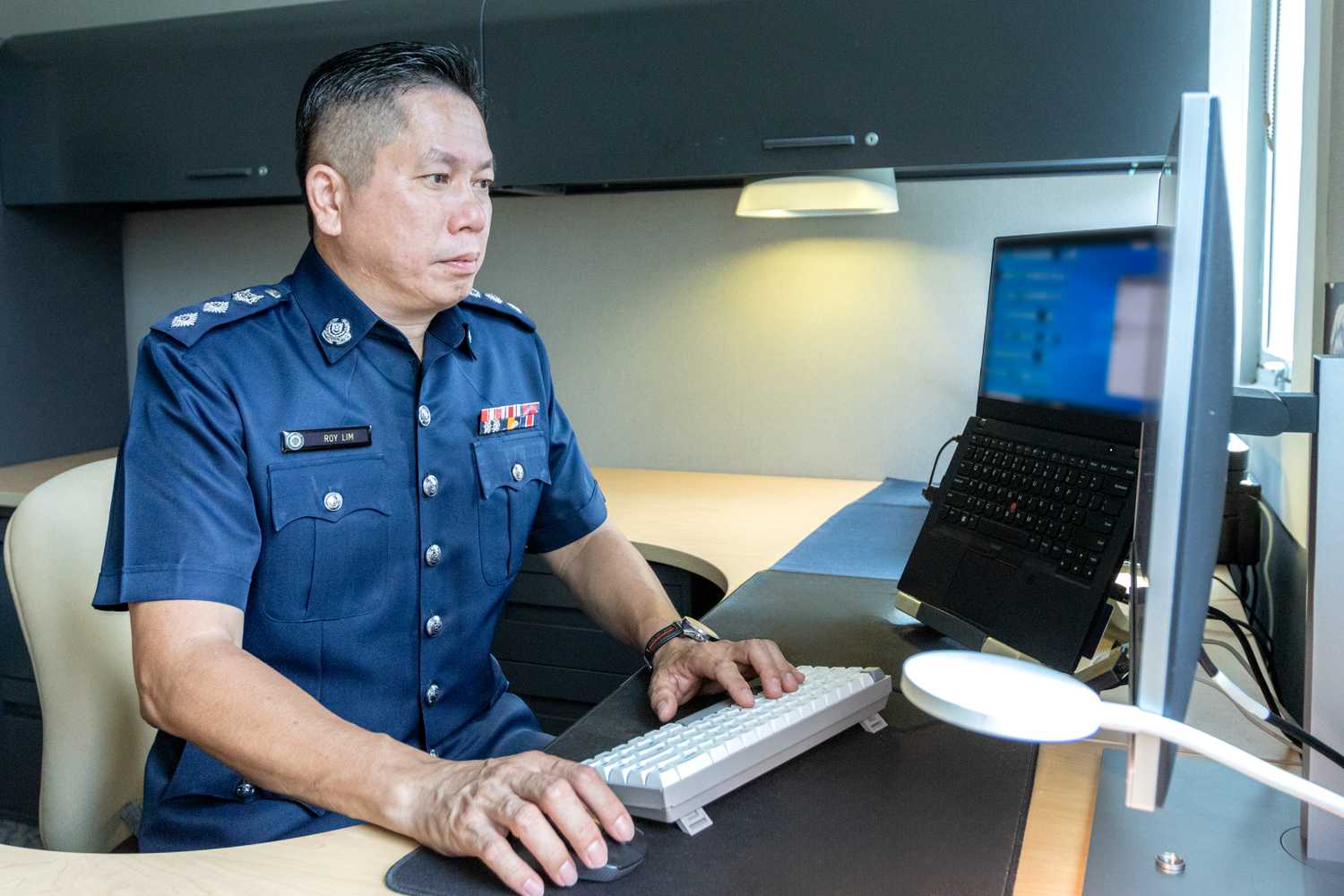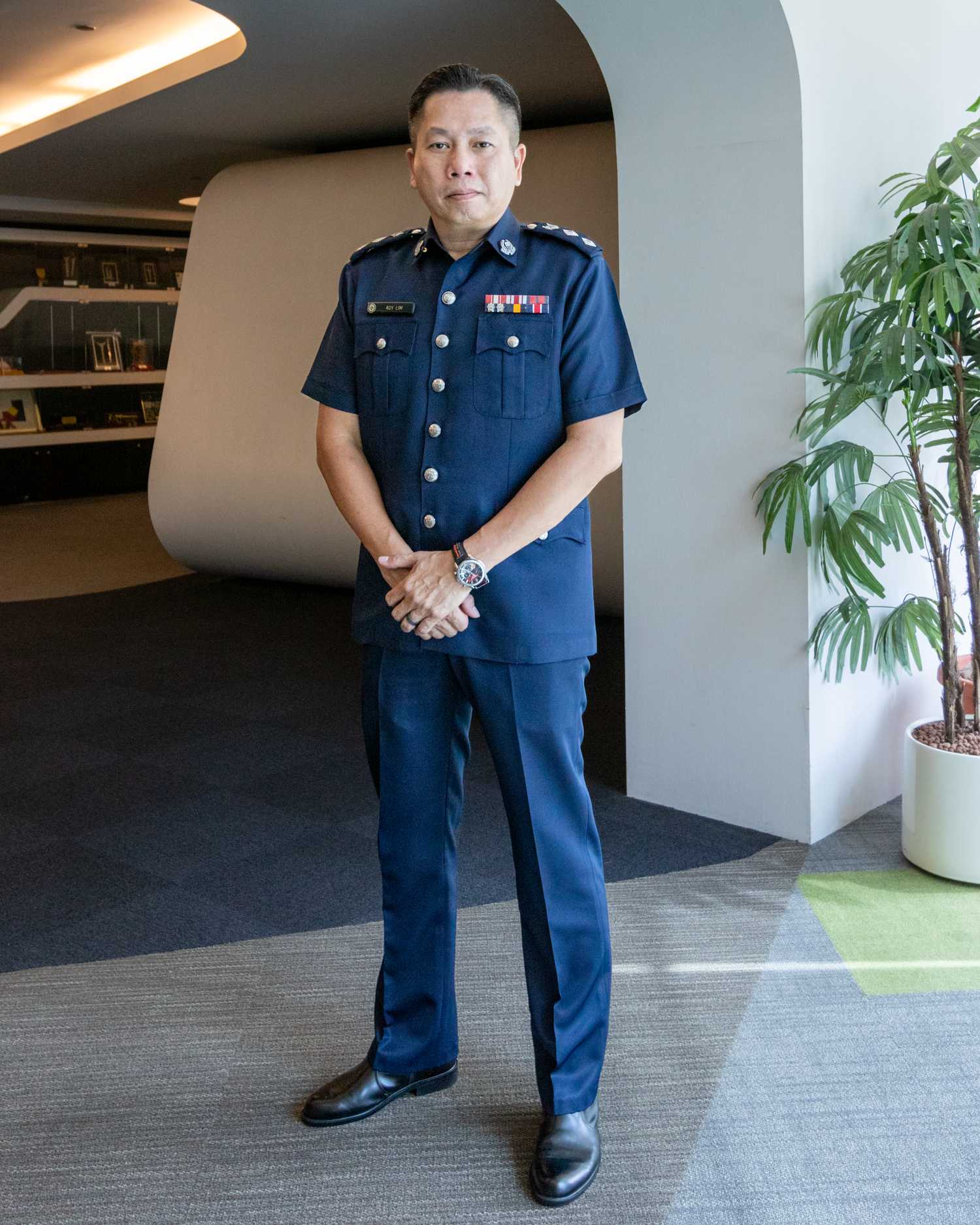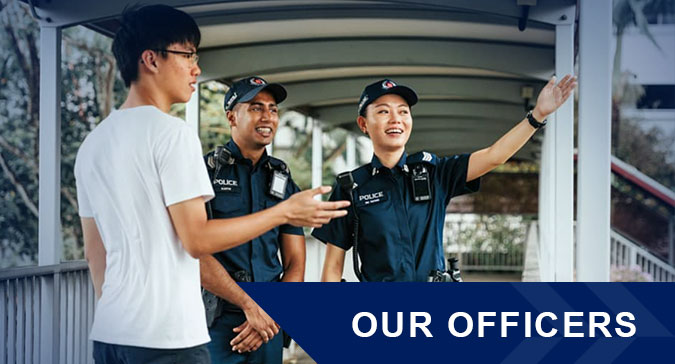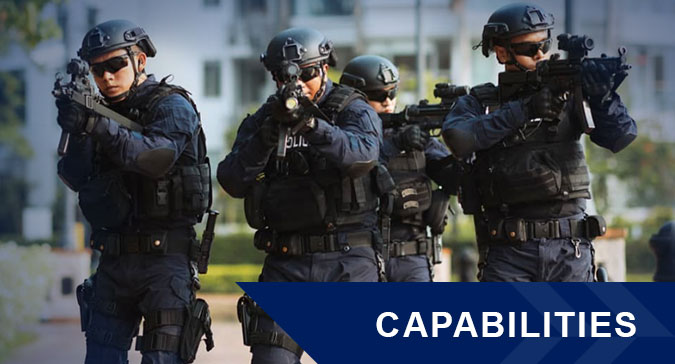From the 2005 Kallang River body parts murder to other complex, high-profile cases, Supt Roy Lim has investigated them all.
By: Amanda Wong

As a young Police Coast Guard (PCG) officer in 1990 who’d just joined the Singapore Police Force (SPF), then-Constable Roy Lim displayed an avid interest in investigation. The young officer aspired to join the Special Investigation Section (SIS), which investigates homicides, kidnappings, and firearms-related crimes. Thirty-four years later, Superintendent of Police (Supt) Roy Lim serves with pride as the Head of SIS. He shares his investigative journey with Police Life.
Bring us through your journey in the SPF.
I joined the SPF in 1990 as a PCG officer following my graduation from the Old Police Academy. A year later, I was posted to Clementi Division as a patrol officer and became an Investigation Officer (IO) in 1994, investigating routine crimes and misdemeanours.
In 2002, I had the opportunity to join the SIS, and I progressed to become its Deputy Head in 2012. In 2018, I became the Head of the Bomb and Explosive Branch. Two years later, I returned to Clementi Division as Head Investigation, before coming to CID as the Head of SIS in 2021.
What’s it like working in the SIS?
The SIS specialises in investigating sensitive crimes such as homicide, kidnapping, and crimes involving the use of firearms or bombs. The nature of the crimes we deal with may be violent or even gruesome.

While our officers work regular office hours, we remain on standby at night to attend to cases. When my team and I work on a case, we give it all our attention.
What are some unique elements of working in the SIS?
Working in the SIS presents us with a new challenge each day as every case is unique. In 2011, I was tasked to lead the investigations into the breakdowns of the MRT system. This was far from the usual types of cases encountered in the SIS, as it involved examining the circumstances and reasons behind the multiple train disruptions on the North-South Line, affecting many commuters during that period of time.
This case posed a new challenge to my team as we had to quickly learn how the MRT system worked and familiarise with the job scopes of train engineers and maintenance personnel within a short span of time. I recall going down to the MRT tunnels every night to conduct investigations at the train tracks and pick up new insights. As IOs, we may be called upon to research new fields during our investigations, but we don’t let the uncertainties stop us from learning on the go and uncovering the truth.
What’s the most rewarding part about your work?
Investigative work is inherently rewarding, and numerous instances affirmed the sentiment, “this is why I do what I do.” The ability to solve a case and provide closure to victims and their families is immensely meaningful.

What are some challenges you face at work?
In the SIS, we encounter many gruesome cases that can be stomach-churning. When I first started out, there were times when I was taken aback and felt uncomfortable. However, over time, I developed a self-healing mechanism to view deaths through a different lens, and not let them affect me too much.
What’s your most memorable case?
The case that left the largest impact on me was the Kallang River body parts murder in 2005. It was my first experience dealing with dismembered body parts, and it was a particularly gruesome case. The Police were called in when a cleaner found the victim’s dismembered lower torso in a cardboard box picked up from the banks of the Kallang River. We conducted an extensive search around the beachfront area before locating the victim’s upper torso with her hands intact, allowing us to take her fingerprints and identify her. With the support of various CID branches, we were able to swiftly solve the case and prosecute the perpetrator.

What does it take to become an IO?
Over the years, there has been an increase in media depicting crime scene investigations for public consumption. Criminals today have become more aware of police operations through popular television shows and books. They’re aware of how to cover their tracks and avoid detection.
This is the reality of being an IO: to outsmart criminals, we must always be three steps ahead of them. IOs need a passion for investigation that enables them to be inquisitive and look at problems from different angles. As investigators, we have to find new techniques and constantly innovate ourselves to be better.
Above all, IOs require perseverance. Cases may take days, weeks, months and even years to solve, but IOs don’t give up, and are required to possess the tenacity to try over and over again to seek the truth.

“Put some knee-guards on next time, and do it right!” – Supt Roy Lim
What advice would you give to your younger self?
When I first started out as an IO, I didn’t grasp the full scope of what awaited me. It’s been a journey marked by challenges and growth, each step toughening me and enriching my experiences. Now, I can say that it’s an immersive journey filled with challenges that ultimately lead to immense personal and professional rewards.
The biggest piece of advice I’d give to my younger self is to have an eye for detail and ask more questions. Being inquisitive and meticulous in our thought process ensures precision in investigations and crime-solving. I’ve stumbled on my IO journey, and learned from different mistakes. If I had a chance to speak to my younger self, I’d say, “Put some knee-guards on next time, and do it right!”










